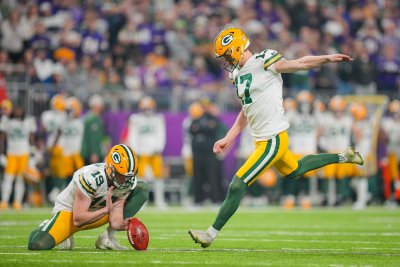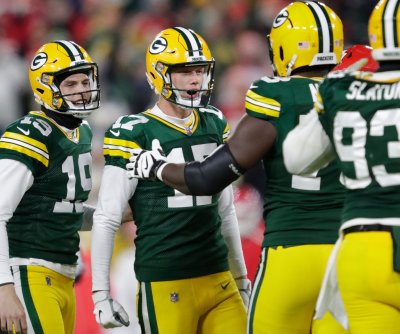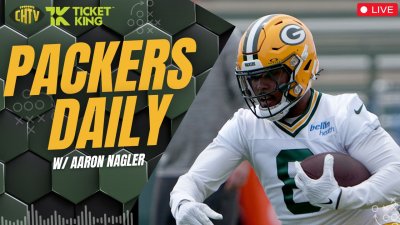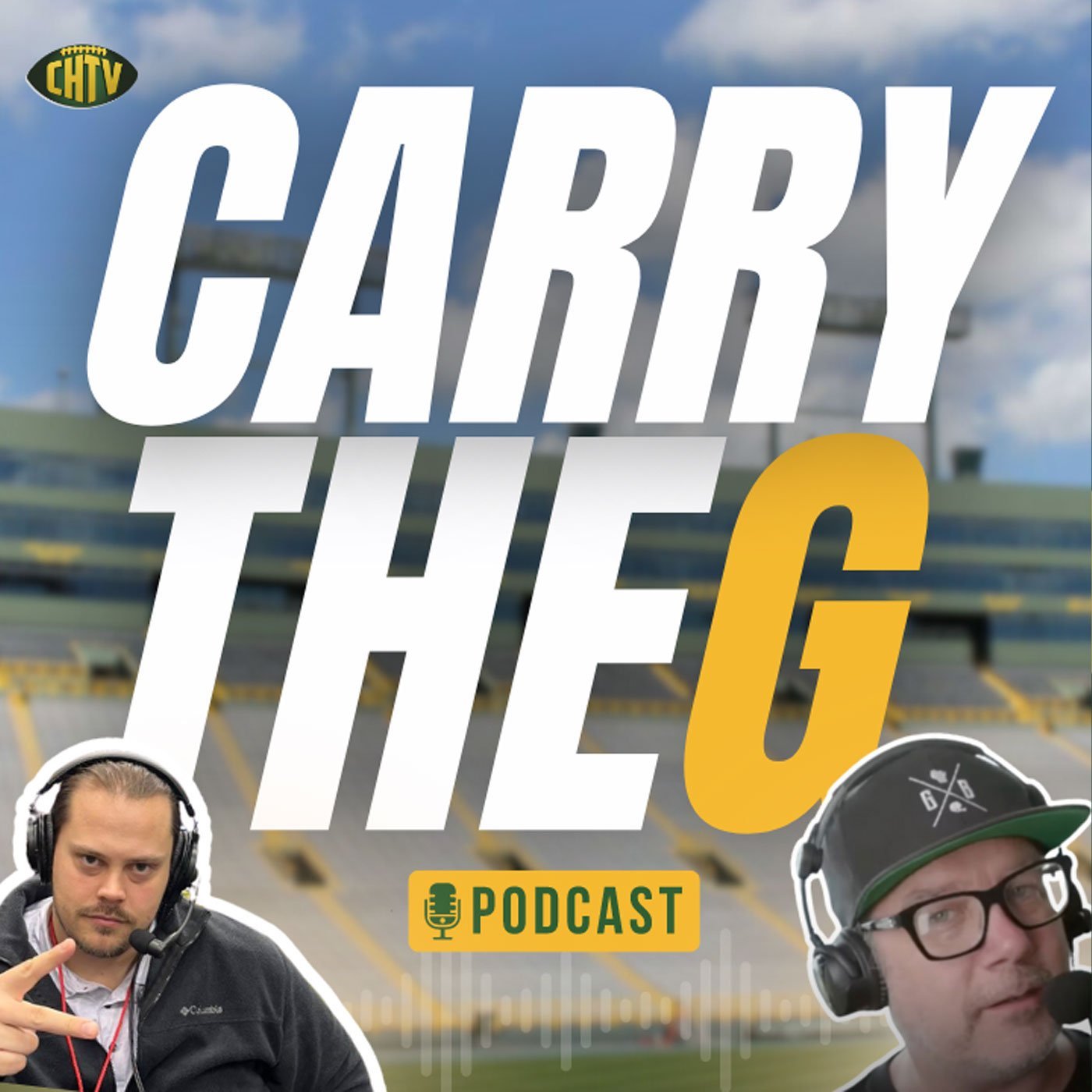Some Hard Truths About Soft-Tissue Injuries
Can Packers limit being hamstrung by hamstrings?

Heading into the opening game of the season last year against the Bears, the Packers listed three players on its injury report with hamstring problems. The 31 other teams had just 21 combined. Then we watched Christian Watson lose most of the season, while key players such as Aaron Jones, Eric Stokes and Jaire Alexander all were shelved for varying periods.
The Packers, and Watson himself, are sending optimistic signals this year, touting their work with experts at the University of Wisconsin. But hamstring injuries have plagued Green Bay, and the rest of the league, for decades with only marginal improvement. The reality is that despite being a non-contact injury, reducing it in number and severity remains elusive. On average, an estimated 175 hamstring injuries occur in the NFL each season. No team has cracked the code.
“Everybody’s aware this is a problem, and nobody out there has a magic formula," Stephania Bell, a physical therapist and ESPN injury analyst, said in a 2018 interview. “The No. 1 risk factor for a hamstring injury is a previous hamstring injury." In fact, according to a group of medical researchers, of the 2,075 NFL hamstring injuries recorded between the 2009-10 and 2019-20 seasons, 38.4% of them were recurring.
That’s not great news for a Green Bay roster with several players with hamstring histories. Josh Jacobs already is dealing with the problem again this year, though the team says it’s minor and he is expected back soon. But as we’ve seen, those predictions are often wrong. We don’t yet know about Stokes and Watson.
To be sure, there are many degrees of severity with these injuries, complicating matters even further. But here are some things we do and don’t know:
— What exactly happens? Hamstrings are prone to injury at higher speeds and thus are more common for those playing receiver, DB, linebacker and running back. For years teams focused on what were deemed more serious lower extremity injuries — ligament tears, ankle damage, etc. Yet the effects of hamstring injuries can linger longer, and it’s interesting how much wasn’t known about exactly how and when the injury occurs until the past several years. For example, it was Dr. Bryan Heiderscheit’s team at UW which discovered that most of the strain on hamstrings occurs not at initial burst or acceleration, but when a player is running at roughly 60 percent or more of his top capability. More recently, as in the case of Watson, the UW group has been looking at the asymmetry between strength of each leg’s hamstring and how that imbalance can increase a player’s vulnerability.
— A lot of these injuries occur in pre-season camps and games. This would be better news if it wasn’t for the recidivism problem, but it offers more opportunities than in the regular season to try different tactics to limit hamstring injuries. The NFL has been touting its improved pre-season injury numbers — including lower body extremities — but it’s unclear how much of that is specific to hamstrings, or whether the results are from a general reduction in pre-season activity, due to teams being cautious and the tradeoffs made as a result of adding more regular-season games.
— Conditioning matters greatly. Just this week, the players association proposed an overhauled off-season schedule that moves OTAs later, eliminating the break between them and training camps. The proposal was not aimed at the hamstring problem, but rather players believing that lengthening the time away from all activity after the end of the previous season was beneficial for their bodies. But the medical research suggests that a more concentrated and sustained conditioning regimen going into the start of the season could also be helpful for mitigating the number of hamstring injuries. As far back as 2000, the Patriots, who had had an unusually high number of hamstring problems, developed a new approach that involved more intensive conditioning for non-contact injuries and had some success in cutting down on their hamstring problems. It’s unclear based on available data how they have fared compared with other teams since then, but their physical therapy expert at the time believed that the preseason programs of teams were inadequate in conditioning players for the long haul of the regular season. And yet contractual rules that limit player training time — in part as a means preserving health — create a problematic paradox.
— Playing surface and regular-season scheduling are not the problem. Data shows no statistical difference between turf and natural grass when it comes to hamstrings, nor do more games during the week, with shorter turnaround times, seem to matter. It’s more about the ongoing conditioning.
— There remains a lot to learn. Basketball and hockey players suffer fewer hamstring injuries, and there has been speculation that it’s in part because their players are moving backwards at speed far more often than football players. Backwards running, the theory goes, helps strengthens them. A medical study of college football players found that those who did backward running as part of their conditioning showed considerably greater hamstring flexibility. Other research has shown that shorter strides are helpful, so some runners have been coached to increase the number of steps they take while running at the same speed. Players with previous hamstring problems also tend to overcompensate to try to limit recurrence, which can actually lead to more problems. More techniques have been and will be deployed, particularly as more data is collected that identifies exactly what happens when players run.
Much of this is now the responsibility of Aaron Hill, Green Bay’s new strength and conditioning coach, who had served as the deputy with the 49ers. It's a critically important, under-the-radar role. Success could make a big difference in how far the Packers advance this year. GPG.
PLEASE SUBSCRIBE TO OUR CHEESEHEAD NATION WEEKLY NEWSLETTER HERE.
__________________________
Jonathan Krim grew up in New York but got hooked on the Packers — and on hating the Cowboys — watching the Ice Bowl as a young child. He blames bouts of unhappiness in his late teens on Dan Devine. A journalist for several decades who now lives in California, he enjoys trafficking in obscure cultural references, lame dad jokes and occasionally preposterous takes. Jonathan is a Packers shareholder, and insists on kraut with his brats. You can follow Jonathan on twitter at @Jkrim.
__________________________















Comments (34)
Vachio
May 28, 2024 at 04:10 pm
It's honestly not that complicated. Nutritionist Nathan Payton talks about it occasionally. He used Max McGee as a prime example. How could Max go out drinking all night before a game, perform well, and rarely (if ever) injure a hamstring? Same thing for guys like LT in his era. They did everything wrong according to modern sports ideology, yet they had vastly fewer soft tissue injuries. It should be plain as day that many of the things we commonly believe to be correct are not, in fact, correct. As Yogi Berra said, "It's not the things you don't know that get you into trouble. It's those things you know for sure that just ain't so."
Part of the key was coming in slightly dehydrated from the drinking made his body soak up whatever he did take in and actually hydrate. The common practice these days is to flood athletes with a ton of fluids, which ultimately has the opposite effect, making the muscles less hydrated and more prone to injury. We also have the issue with the general demonization of salt (a critically important electrolyte). True properly timed hydration could do wonders.
It's not a toughness thing, even though some will try to make that case (back in my day, we just taped over a torn hamstring and kept on playing...uphill...both ways), it's simply a misapplication of basic hydration practices that have been lost in a sea of dogma and marketing.
Here's a very long interview series (almost 4 hours) with Nathan where he touches on many of these topics: https://www.youtube.com/watch?v=ACeuqfS-e1c
HarryHodag
May 28, 2024 at 05:00 pm
Over training is a key factor in the number of injuries. I admit to being a crabby old man but 'in the old days' there were injuries but nowhere near the number now. I think the athletes train themselves into injury, contrary to all the 'experts'.
GregC
May 28, 2024 at 05:32 pm
The Max McGee example is ridiculous. You lost me right there. The physical demands of the modern NFL are very different now compared to the 1960s. The players are bigger and faster and more muscular.
HarryHodag
May 28, 2024 at 05:06 pm
The key to staying healthy is rarely talked about these days: rest. You see highly trained athletes who rarely give their bodies enough time to recover from an intense season. Training camps have become extended OTA's as coaches try to limit injuries.
Here's something to ponder: Matt LaFleur, Tucker Kraft and Zach Tom are all now laid up with pectoral tears. Kraft said they were lifting with heavy weights when it happened. I can't help but wonder if something is awry with the new training regimen?
KKB
May 28, 2024 at 07:48 pm
New training staff? seems we have traded hammy issues for weight-lifting issues. Kraft - makes 4 already this off season, including MLF
SicSemperTyrannis
May 30, 2024 at 12:15 pm
Kraft, Tom, MlF and who else?)
LambeauPlain
May 29, 2024 at 06:44 am
Kraft said he injured his pectoral not with heavy weights, but with light weights, repetitive speed lifting.
HarryHodag
May 29, 2024 at 11:58 am
J-S reported Kraft reported the tear from the bone on the final rep of heavy lifting.
CanPackFan
May 29, 2024 at 07:41 am
I agree with u Harry about this sudden increase in weight training injuries. My guess is that Hill may be asking players to train too quickly with extremely greater weights versus working them upwards more slowly? I've done this in the past myself and seen other people train too quickly with high weights as well. On the otherhand, we're not not pro athletes who can train in the gym for many hours a day and are constantly weight training. Just saying...
SpikeHyzer
May 30, 2024 at 04:12 pm
Actually, as Kraft himself stated in an interview yesterday (now reiterated on most fan sites), he was lifting a LOWER amount of weight. They were however, 'speed benching' a practice that should never be done with any muscle group. The new paradigm in PT is to have a persistent routine--not rest or recovery unless you had a serious injury; the intense part of the season is more emotional and that's what guys are really trying to get away from--and that less is more.
In other words, low weights, never speed reps, and more reps.
mnbadger
May 28, 2024 at 05:33 pm
there's much data to digest. Personally, I follow the mad max regimen and can report much soft tissue with very few injuries!
GPG!
ArlenWilliams
May 28, 2024 at 09:05 pm
Can Packers limit being hamstrung by hamstrings?
One thing they can do is to prohibit any more shots ginned-up by the WHO, CDC, and NIH in a ginned-up panic.
And stretch like athletes did until about 2000. And what Vachio said.
GratefulMed
May 29, 2024 at 07:43 am
This may be the single stupidest comment I have ever seen on a Packers board.
PackerBackerAZ
May 29, 2024 at 03:02 pm
Certainly the most ignorant.
CheeseEdWest2
May 29, 2024 at 05:53 pm
I think yours is in the running. The adverse event rate for the shots is enormous, yet not admitted to by the powers that be. Think your yourself, b/c nobody else can properly do it for you.
TKWorldWide
May 29, 2024 at 07:47 pm
Have you read any of MY comments?
MitchAnthony
May 28, 2024 at 11:10 pm
Okay. I read the article and the comments and what I take away is...
Christian Watson needs a drinking buddy to take him out on the town and get polluted before the game, maybe stretch before drinking and hydrate after, he'll be good.
Just like Max. Cool.
jlc1
May 29, 2024 at 07:33 am
You forgot that he's supposed to stay away from vaccines.
Rory P Scrotem
May 29, 2024 at 06:27 am
I hate to say this but, once you have hamstring issues...there will "always" be a strong reoccurrence factor. They "never" totally heal. Having been a 2-time state champion hurdler...Sadly, I am personally aware of the hurdles ahead for Christian & others. Uneven playing surfaces will reek havoc. Softer grass spots or even slight indentations (or minor elevations) on "any type of surface" will cause problems.
Another "totally unspoken" issue for young males is sexual activity. What happens to muscles the hours or even day after? However, who the hell is going to tackle that notion...even though quite relevant.
In the final analysis...try to remedy hammys by using all known methods...then wrap them using whatever heat cream makes sense. After games...use cold packs for 24 hours...then alternate cold & heat. After 48 hours use steam heat pads up until game time.
Even if an athlete thinks the hammy is healed, it should "always" be wrapped with the heat/cold regiment to follow.
Unfortunate to say...the injury is permanent. It will never be totally healed.
LambeauPlain
May 29, 2024 at 06:49 am
Casey Hayward, Packers CB, had a hamstring issue early in career. He never had them again, and enjoyed a pro bowl career after Ted let him go to the Chargers with little effort to re-sign him.
GregC
May 29, 2024 at 07:28 am
"Another 'totally unspoken' issue for young males is sexual activity. What happens to muscles the hours or even day after?"
With a name like Rory P Scrotem, you must be an expert on human sexuality.
LambeauPlain
May 29, 2024 at 09:57 am
You didn't get the soft tissue lecture from your Dad about what happens after? :-)
Rory P Scrotem
May 29, 2024 at 11:25 am
Gee no...I was too busy getting lectured about "everything else" under the sun (or is it son?)
Heyjoe414
May 30, 2024 at 07:48 am
Yeah I would think hurdlers get their fair share of hamstring injuries. And you're right - once a hamstring, or any muscle is strained or partially torn, it will always be susceptible to re-injury. The healing process will create at least some scar tissue. That's minimal with a solid rehab program, but it will still be there. Scar tissue does not stretch and so puts further strain on the muscle affected.
Personally I favor ice over heat to treat muscles. Heat does improve circulation and blood flow, but that also causes inflammation. If heat is used, your method is correct - ice an injury first to bring down inflammation and as healing starts, use heat to increase blood flow. I'd suggest stretching and massage rather than heat, but it will all work if applied properly.
That's a long way of saying it's a damn frustrating injury. And in Watson's case, I don't buy that one hamstring was 22% weaker than the other. That's just a huge discrepancy in anyone, much less a well-conditioned athlete. Maybe it's true, just seems unlikely.
jont
May 30, 2024 at 10:16 am
"in Watson's case, one hamstring is 22% weaker than the other. That's just a huge discrepancy in anyone, much less a well-conditioned athlete. Maybe it's true, just seems unlikely."
This is a difficult one for me too. Like many of our fellow CHTV expert commentators, I've read a bit about hamstrings lately, and this theory seems very odd. First I wonder how one could even train to get such a difference (and with 5+ years of personal trainers?!), and second how does this work exactly to strain one tendon in particular?
An odd correlation it might be, but causation? My new just-ocurred-to-me theory: if he's training so badly as to develop his legs so unevenly, he is likely doing other things worng too.
dobber
May 30, 2024 at 01:14 pm
"That's just a huge discrepancy in anyone, much less a well-conditioned athlete. "
I think it's entirely possible if he went to get measured and checked out shortly after the end of season and he missed the latter part of the year with his hammy injury. It's going to significantly impact how you use the limbs, whether you're favoring one over the other, and he probably hadn't had much opportunity to get back into a serious off-season program, yet.
SpikeHyzer
May 30, 2024 at 04:18 pm
Simply untrue. I'm a 6 footer who could dunk easily. I ran backwards a lot. The single time I had a hammy injury (a tear), it was when I went for a dunk and there was some water on the pavement and I slid forward a foot before elevating (and not coming close).
It healed in 6 or 8 weeks, far longer than I expected, but I had been able to play in about 2 weeks, though I lacked explosiveness and couldn't get above the rim again until the 8 week mark.
So, I became a PT around that time. I agree with the PT quoted above, but not with anybody commenting below. It's all anecdotal. I also question the UW guys who said he had a 20% differential in mass, a near impossibility (strength, possibly, but usually those limb to limb differentials are under 5%).
It's also not really about diet or hydration. We have to presume athletes are getting the potassium, magnesium (the under rated element in terms of cramps), sodium, and water they need.
It's about flexibility and consistent training. Watson needs to work out through the whole year and maybe take up yoga.
Rory P Scrotem
May 29, 2024 at 09:55 am
Hi Greg - Name was changed from Roaring to Rory as one of my Frat brothers had trouble pronouncing Roaring. Not quite an expert however, during my stay @ UW-LaCrosse I "did" peek at the feminine gland once or twice...I think it was twice...
GregC
May 29, 2024 at 10:12 am
It was the surname Scrotem that I was referring to. Maybe it's your real name. One time on another site there was a Packer fan who posted under the name mattressell. I assumed he was a mattress salesman only to learn that his real name was Matt Ressell.
Might as well clear these things up with training camp still two months away. An eternity.
Rory P Scrotem
May 29, 2024 at 10:00 am
If Casey Hayward strained a hamstring, he is darn lucky. Most hamstring issues are rips or tears...which are larger problem!
TKWorldWide
May 29, 2024 at 07:49 pm
Why do slow guys rarely suffer hammy problems?
SicSemperTyrannis
May 30, 2024 at 02:37 pm
It's a speed injury. Like a pec, apparently.
SpikeHyzer
May 30, 2024 at 04:20 pm
No. It typically occurs at just over 60% of exertion. With speed guys, sure, but it's not ever happening at full speed. Watson and Giannis both went down when they were barely moving and that's typical in 90% of these injuries.
The slow guys never get up to 60% of their full speed!! Lineman are not moving that fast. Ever.
SpikeHyzer
May 30, 2024 at 04:39 pm
I agree with the PT above because I'm in the same field.
However, there is nothing but bad information from the fans here.
It has nothing to do with diet or hydration. We must presume pro athletes and their training staffs have at least worked out proper hydration and that athletes are getting enough potassium, magnesium and sodium.
It's not a full speed injury, though the problem for Kraft WAS that he was doing speed reps (something one should NEVER do). Less is more in PT these days. We should work out nearly daily. We should work out at the same time each day (our connective tissue needs to reset each day, much like our brain has to reboot each day because white matter is the exact same material as cartilage). The same time theory also is an argument against having games on different days and at different times, which does contribute to injury.
It was also ludicrous of the UW 'experts' to state that Watson had a 20% difference in muscle mass between his hamstrings. This borders on the impossible in a healthy person or athlete. At Watson's weight (207) and given the percentage of mass in a leg (17.5%), Watson's legs each should weigh 36 pounds. 3/4s of that weight is in the upper leg (about 26 pounds). The hams are a little bigger than the quads, so it's likely that Watson's each should weigh about 15 pounds.
A 3 pound difference in hamstring mass would have been noticed by everyone in the locker room. We only usually see this in people with degenerative muscle disorders and palsies. It's hard to imagine this never being detected prior (since his actual strength would have had to appear within normal ranges for both legs). This is something they would track and it's certain that a 20% difference in mass would not have shown a minimal (under 5%) difference in strength. Maybe they were trying to trick him into believing they have the answer so that he has belief in the program they put him on.
It's very complicated. As a hoops player who could dunk easily at 6 foot tall, I had but one hamstring injury at the age of 32, which occurred when I slipped on a wet spot while attempting to dunk. I could play again in 2 weeks, but couldn't get above the rim for 8 weeks. I never injured it again and was still dunking at 45.
However, I haven't played hoops in nearly 20 years and have just retired. I still play golf and prefer hilly tracks. I no longer do any backwards running, and I do have chronically tight hams and my calves cramp up all the time. I haven't biked for 2 years due to a hip replacement (and mine was stolen!), but that kept my hams looser than they are now and it will improve when I get a new bike.
He probably needs more flexibility work (like yoga) and maybe backwards running or pedaling a stationary bike backwards to stay warm while on the sidelines.
I hope it's better, but I don't think these specialists are giving him the best or most holistic answer either.